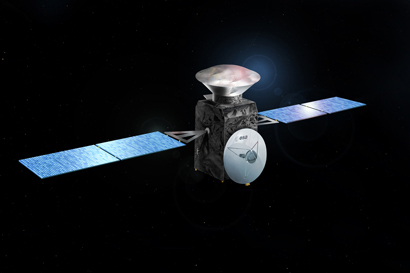People throw rocks at things that shine - Taylor Swift
One of the most successful and inspiring NASA programs has been the Mars program. The United States is the only country to have successfully navigated a rover on the Martian surface, and most of our missions have long outlasted their expiration date. It could even be said that NASA's Mars program has been the shining jewel of the space agency, making numerous discoveries and expanding our knowledge of The Red Planet beyond any expectations. Unfortunately it seems that Taylor Swift's lyric "People throw rocks at things that shine" is true even for NASA and the space industry.
In order to maintain flagship programs like the Space Launch System (SLS) and James Webb Space Telescope (JWST), The White House's NASA Budget request for 2013 has disproportionately cut 20% of the planetary science funding. The 2013 budget allocates only $1.2 billion a year, down from $1.5 billion, with more cuts expected to come. This severely limits NASA's ability to send missions that would further study different bodies in our solar system, including Mars.
 | |
| ExoMars Trace Gas Orbiter Concept Credit: ESA |
Because of these cuts to the planetary science funding, NASA has been forced to back out of the joint ExoMars mission to Mars with the European Space Agency. The mission was set to launch the ExoMars Trace Gas Orbiter in 2016 and a rover in 2018, but now the entire mission is in jeopardy.
Fortunately, Russia may be willing to take a more central role in the mission, thus giving hope that it will be able to continue and collect valuable information about the Martian atmosphere and surface.
It's depressing to hear that one of NASA's forefront programs is losing a disproportionate amount of funds, but there is still hope for the future of Mars travel and exploration! [The following comes from a previous article called SpaceX is Winning the Race to Mars.]
---
The emergence of private space corporations with ambitions beyond low-Earth orbit gives hope to humanity because they can focus solely on space exploration and development and are not limited by bureaucratic procedures like government agencies are.
The future of space exploration is in the hands of ambitious companies like SpaceX whose sole focus is space development and exploration. Hopefully SpaceX can achieve their stated goal of setting a man on Mars in the next 10-20 years, thus starting a new era of private, competitively priced space travel and exploration. The developments in space made by private companies, not governments, will usher in a new era of human exploration and expansion throughout the known universe.
Hopefully SpaceX will still continue working with NASA on the proposed Red Dragon Mission to Mars. Either way the future is sure to be full of more discoveries on Mars by the machines we already have in place and the Mars Science Laboratory (MSL), which is set to land in Gale Crater in August 2012!
Who knows, maybe MSL will discover something that reinvigorates the nation's love of space and increases funding for NASA's planetary science division!

0 comments:
Post a Comment